qwenvl2.5-3b模型微调
注意:需要将原始模型中的preprocessor_config.json 和chat_template.json拷贝到微调后模型的目录中。执行:python train_qwenvl.py。全参数微调需要更大的显存,因此可能需要降低。学习率通常比 LoRA 更小(例如。可以看出识别结果是对的。
1.下载模型
pip install modelscope
pip install filelock
modelscope download --model Qwen/Qwen2.5-VL-3B-Instruct --local_dir ./Qwen2.5-VL-3B-Instructmodelscope download --model Qwen/Qwen2.5-VL-3B-Instruct --local_dir ./Qwen2.5-VL-3B-Instruct
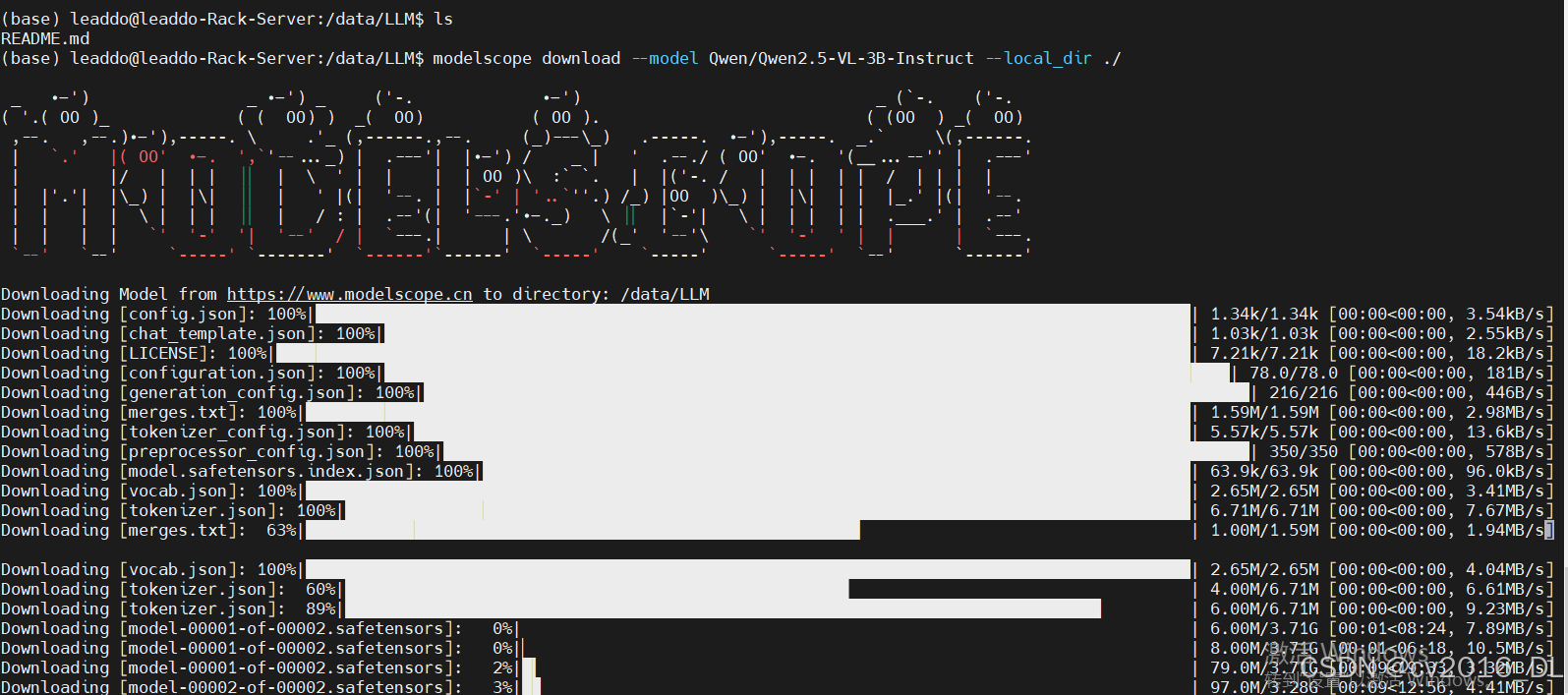
拉取镜像:
docker pull modelscope-registry.cn-hangzhou.cr.aliyuncs.com/modelscope-repo/modelscope:ubuntu22.04-cuda12.4.0-py310-torch2.6.0-vllm0.8.5.post1-modelscope1.27.1-swift3.5.3创建容器:
docker run -it --name qwenvl --network=host -v /data:/data -v /nfs/lide01/shiwei:/nfs --gpus all --shm-size 32G modelscope-registry.cn-hangzhou.cr.aliyuncs.com/modelscope-repo/modelscope:ubuntu22.04-cuda12.4.0-py310-torch2.6.0-vllm0.8.5.post1-modelscope1.27.1-swift3.5.3 /bin/bash
docker run -it --name qwenvl --network=host -v /data:/data -v /nfs/lide01/shiwei:/nfs --gpus all --shm-size 32G modelscope-registry.cn-hangzhou.cr.aliyuncs.com/modelscope-repo/modelscope:ubuntu22.04-cuda12.4.0-py310-torch2.6.0-vllm0.8.5.post1-modelscope1.27.1-swift3.5.3 /bin/bash
常见镜像地址:
2.测试下载的模型
from transformers import Qwen2_5_VLForConditionalGeneration, AutoProcessor
from PIL import Image
# 根据实际情况修改
model_path = "./qwen2.5-vl-3b-instruct" # 修改为本地模型下载地址
img_path = "./98uq.jpg" # 输入图片地址
#question = "Please describe the entity target content in these images." # 针对图片的提问,可以是中文/英文,但是最后的输出结果不完全一样; 描述一下这张图片的内容。
question = "Detect all objects in the image and return their locations in the form of coordinates. The format of output should be like {“bbox”: [x1, y1, x2, y2], “label”: the name of this object in Chinese, “cof”: What is the confidence score that this object actually exists? The output is normalized to 0-1.}" # 检测相关的prompt;
# question = "Read all texts in the image, output in lines. " ocr相关任务;
# question = "QwenVL HTML with image caption" html格式输出的测试;
# 加载模型
model = Qwen2_5_VLForConditionalGeneration.from_pretrained(model_path, torch_dtype="auto", device_map="auto")
#print(model)
processor = AutoProcessor.from_pretrained(model_path)
# 输入配置
image = Image.open(img_path)
messages = [
{
"role": "user",
"content": [
{
"type": "image",
},
{"type": "text", "text": question},
],
}
]
text_prompt = processor.apply_chat_template(messages, add_generation_prompt=True) #处理成相应的格式
inputs = processor(text=[text_prompt], images=[image], padding=True, return_tensors="pt")
inputs = inputs.to('cuda')
# 推理
generated_ids = model.generate(**inputs, max_new_tokens=128)
generated_ids_trimmed = [
out_ids[len(in_ids) :] for in_ids, out_ids in zip(inputs.input_ids, generated_ids)
]
output_text = processor.batch_decode(
generated_ids_trimmed, skip_special_tokens=True, clean_up_tokenization_spaces=False
)
print(output_text)
3.处理数据
完成从数据下载到生成csv的过程:
data2csv.py
# 导入所需的库
from modelscope.msdatasets import MsDataset
import os
import pandas as pd
MAX_DATA_NUMBER = 1000
dataset_id = 'AI-ModelScope/LaTeX_OCR'
subset_name = 'default'
split = 'train'
dataset_dir = 'LaTeX_OCR'
csv_path = './latex_ocr_train.csv'
# 检查目录是否已存在
if not os.path.exists(dataset_dir):
# 从modelscope下载COCO 2014图像描述数据集
ds = MsDataset.load(dataset_id, subset_name=subset_name, split=split)
print(len(ds))
# 设置处理的图片数量上限
total = min(MAX_DATA_NUMBER, len(ds))
# 创建保存图片的目录
os.makedirs(dataset_dir, exist_ok=True)
# 初始化存储图片路径和描述的列表
image_paths = []
texts = []
for i in range(total):
# 获取每个样本的信息
item = ds[i]
text = item['text']
image = item['image']
# 保存图片并记录路径
image_path = os.path.abspath(f'{dataset_dir}/{i}.jpg')
image.save(image_path)
# 将路径和描述添加到列表中
image_paths.append(image_path)
texts.append(text)
# 每处理50张图片打印一次进度
if (i + 1) % 50 == 0:
print(f'Processing {i+1}/{total} images ({(i+1)/total*100:.1f}%)')
# 将图片路径和描述保存为CSV文件
df = pd.DataFrame({
'image_path': image_paths,
'text': texts,
})
# 将数据保存为CSV文件
df.to_csv(csv_path, index=False)
print(f'数据处理完成,共处理了{total}张图片')
else:
print(f'{dataset_dir}目录已存在,跳过数据处理步骤')在同一目录下,用以下代码,将csv文件转换为json文件(训练集+验证集):
csv2json.py
import pandas as pd
import json
csv_path = './latex_ocr_train.csv'
train_json_path = './latex_ocr_train.json'
val_json_path = './latex_ocr_val.json'
df = pd.read_csv(csv_path)
# Create conversation format
conversations = []
# Add image conversations
for i in range(len(df)):
conversations.append({
"id": f"identity_{i+1}",
"conversations": [
{
"role": "user",
"value": f"{df.iloc[i]['image_path']}"
},
{
"role": "assistant",
"value": str(df.iloc[i]['text'])
}
]
})
# print(conversations)
# Save to JSON
# Split into train and validation sets
train_conversations = conversations[:-4]
val_conversations = conversations[-4:]
# Save train set
with open(train_json_path, 'w', encoding='utf-8') as f:
json.dump(train_conversations, f, ensure_ascii=False, indent=2)
# Save validation set
with open(val_json_path, 'w', encoding='utf-8') as f:
json.dump(val_conversations, f, ensure_ascii=False, indent=2)4.开始微调
train_qwenvl.py
import torch
from datasets import Dataset
from modelscope import snapshot_download, AutoTokenizer
from swanlab.integration.transformers import SwanLabCallback
from qwen_vl_utils import process_vision_info
from peft import LoraConfig, TaskType, get_peft_model, PeftModel
from transformers import (
TrainingArguments,
Trainer,
DataCollatorForSeq2Seq,
Qwen2_5_VLForConditionalGeneration,
AutoProcessor,
)
import swanlab
import json
import os
prompt = "你是一个LaText OCR助手,目标是读取用户输入的照片,转换成LaTex公式。"
model_id = "./Qwen2.5-VL-3B-Instruct"
local_model_path = "./Qwen2.5-VL-3B-Instruct"
train_dataset_json_path = "latex_ocr_train.json"
val_dataset_json_path = "latex_ocr_val.json"
output_dir = "./output/Qwen2-VL-3B-LatexOCR"
MAX_LENGTH = 8192
def process_func(example):
"""
将数据集进行预处理
"""
input_ids, attention_mask, labels = [], [], []
conversation = example["conversations"]
image_file_path = conversation[0]["value"]
output_content = conversation[1]["value"]
messages = [
{
"role": "user",
"content": [
{
"type": "image",
"image": f"{image_file_path}",
"resized_height": 500,
"resized_width": 100,
},
{"type": "text", "text": prompt},
],
}
]
text = processor.apply_chat_template(
messages, tokenize=False, add_generation_prompt=True
) # 获取文本
image_inputs, video_inputs = process_vision_info(messages) # 获取数据数据(预处理过)
inputs = processor(
text=[text],
images=image_inputs,
videos=video_inputs,
padding=True,
return_tensors="pt",
)
inputs = {key: value.tolist() for key, value in inputs.items()} #tensor -> list,为了方便拼接
instruction = inputs
response = tokenizer(f"{output_content}", add_special_tokens=False)
input_ids = (
instruction["input_ids"][0] + response["input_ids"] + [tokenizer.pad_token_id]
)
attention_mask = instruction["attention_mask"][0] + response["attention_mask"] + [1]
labels = (
[-100] * len(instruction["input_ids"][0])
+ response["input_ids"]
+ [tokenizer.pad_token_id]
)
if len(input_ids) > MAX_LENGTH: # 做一个截断
input_ids = input_ids[:MAX_LENGTH]
attention_mask = attention_mask[:MAX_LENGTH]
labels = labels[:MAX_LENGTH]
input_ids = torch.tensor(input_ids)
attention_mask = torch.tensor(attention_mask)
labels = torch.tensor(labels)
inputs['pixel_values'] = torch.tensor(inputs['pixel_values'])
inputs['image_grid_thw'] = torch.tensor(inputs['image_grid_thw']).squeeze(0) #由(1,h,w)变换为(h,w)
return {"input_ids": input_ids, "attention_mask": attention_mask, "labels": labels,
"pixel_values": inputs['pixel_values'], "image_grid_thw": inputs['image_grid_thw']}
def predict(messages, model):
# 准备推理
text = processor.apply_chat_template(
messages, tokenize=False, add_generation_prompt=True
)
image_inputs, video_inputs = process_vision_info(messages)
inputs = processor(
text=[text],
images=image_inputs,
videos=video_inputs,
padding=True,
return_tensors="pt",
)
inputs = inputs.to("cuda")
# 生成输出
generated_ids = model.generate(**inputs, max_new_tokens=MAX_LENGTH)
generated_ids_trimmed = [
out_ids[len(in_ids) :] for in_ids, out_ids in zip(inputs.input_ids, generated_ids)
]
output_text = processor.batch_decode(
generated_ids_trimmed, skip_special_tokens=True, clean_up_tokenization_spaces=False
)
return output_text[0]
# 使用Transformers加载模型权重
tokenizer = AutoTokenizer.from_pretrained(local_model_path, use_fast=False, trust_remote_code=True)
processor = AutoProcessor.from_pretrained(local_model_path)
origin_model = Qwen2_5_VLForConditionalGeneration.from_pretrained(local_model_path, device_map="auto", torch_dtype=torch.bfloat16, trust_remote_code=True,)
origin_model.enable_input_require_grads() # 开启梯度检查点时,要执行该方法
# 处理数据集:读取json文件
train_ds = Dataset.from_json(train_dataset_json_path)
train_dataset = train_ds.map(process_func)
# 配置LoRA
config = LoraConfig(
task_type=TaskType.CAUSAL_LM,
target_modules=["q_proj", "k_proj", "v_proj", "o_proj", "gate_proj", "up_proj", "down_proj"],
inference_mode=False, # 训练模式
r=64, # Lora 秩
lora_alpha=16, # Lora alaph,具体作用参见 Lora 原理
lora_dropout=0.05, # Dropout 比例
bias="none",
)
# 获取LoRA模型
train_peft_model = get_peft_model(origin_model, config)
# 配置训练参数
args = TrainingArguments(
output_dir=output_dir,
per_device_train_batch_size=4,
gradient_accumulation_steps=4,
logging_steps=10,
logging_first_step=10,
num_train_epochs=2,
save_steps=100,
learning_rate=1e-4,
save_on_each_node=True,
gradient_checkpointing=True,
report_to="none",
)
# 设置SwanLab回调
swanlab_callback = SwanLabCallback(
project="Qwen2-VL-ft-latexocr",
experiment_name="7B-1kdata",
config={
"model": "https://modelscope.cn/models/Qwen/Qwen2-VL-3B-Instruct",
"dataset": "https://modelscope.cn/datasets/AI-ModelScope/LaTeX_OCR/summary",
# "github": "https://github.com/datawhalechina/self-llm",
"model_id": model_id,
"train_dataset_json_path": train_dataset_json_path,
"val_dataset_json_path": val_dataset_json_path,
"output_dir": output_dir,
"prompt": prompt,
"train_data_number": len(train_ds),
"token_max_length": MAX_LENGTH,
"lora_rank": 64,
"lora_alpha": 16,
"lora_dropout": 0.1,
},
)
# 配置Trainer
trainer = Trainer(
model=train_peft_model,
args=args,
train_dataset=train_dataset,
data_collator=DataCollatorForSeq2Seq(tokenizer=tokenizer, padding=True),
callbacks=[swanlab_callback],
)
# 开启模型训练
trainer.train()
# ====================测试===================
# 配置测试参数
val_config = LoraConfig(
task_type=TaskType.CAUSAL_LM,
target_modules=["q_proj", "k_proj", "v_proj", "o_proj", "gate_proj", "up_proj", "down_proj"],
inference_mode=True, # 训练模式
r=64, # Lora 秩
lora_alpha=16, # Lora alaph,具体作用参见 Lora 原理
lora_dropout=0.05, # Dropout 比例
bias="none",
)
# 获取测试模型,从output_dir中获取最新的checkpoint
load_model_path = f"{output_dir}/checkpoint-{max([int(d.split('-')[-1]) for d in os.listdir(output_dir) if d.startswith('checkpoint-')])}"
print(f"load_model_path: {load_model_path}")
val_peft_model = PeftModel.from_pretrained(origin_model, model_id=load_model_path, config=val_config)
# 读取测试数据
with open(val_dataset_json_path, "r") as f:
test_dataset = json.load(f)
test_image_list = []
for item in test_dataset:
image_file_path = item["conversations"][0]["value"]
label = item["conversations"][1]["value"]
messages = [{
"role": "user",
"content": [
{
"type": "image",
"image": image_file_path,
"resized_height": 100,
"resized_width": 500,
},
{
"type": "text",
"text": prompt,
}
]}]
response = predict(messages, val_peft_model)
print(f"predict:{response}")
print(f"gt:{label}\n")
test_image_list.append(swanlab.Image(image_file_path, caption=response))
swanlab.log({"Prediction": test_image_list})
# 在Jupyter Notebook中运行时要停止SwanLab记录,需要调用swanlab.finish()
swanlab.finish()执行:python train_qwenvl.py

保存微调后模型(lora参数 adapter_model):

访问SwanLab查看训练微调中间过程,需要自己注册账号:
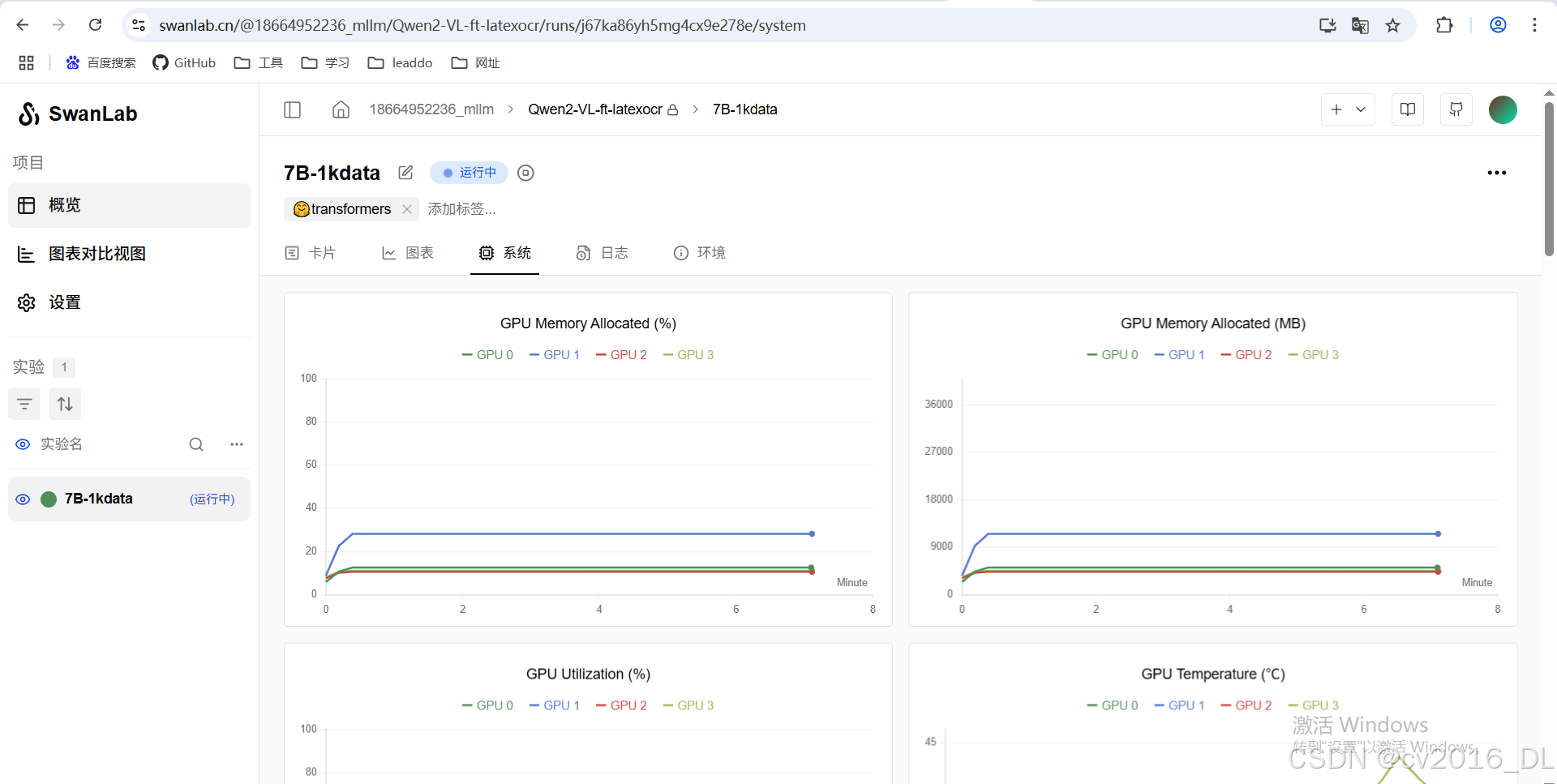
微调后效果:
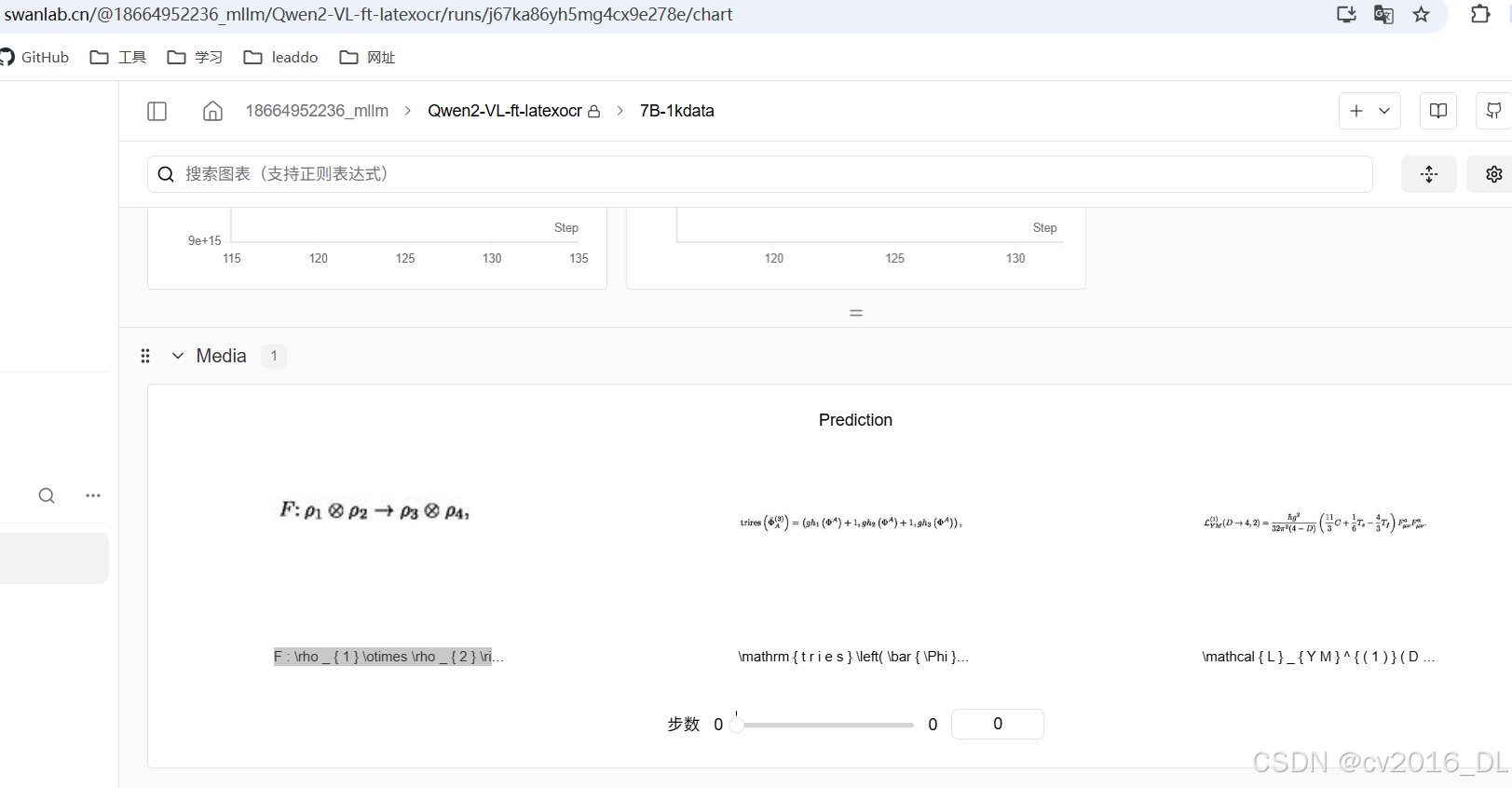

5.微调模型合并以及测试
测试脚本:
infer_qwen2.5vl_funeturning.py
from transformers import Qwen2_5_VLForConditionalGeneration, AutoProcessor
from qwen_vl_utils import process_vision_info
from peft import PeftModel, LoraConfig, TaskType
prompt = "你是一个LaText OCR助手,目标是读取用户输入的照片,转换成LaTex公式。"
local_model_path = "./Qwen2.5-VL-3B-Instruct"
lora_model_path = "./output/Qwen2-VL-3B-LatexOCR/checkpoint-124"
test_image_path = "./LaTeX_OCR/997.jpg"
config = LoraConfig(
task_type=TaskType.CAUSAL_LM,
target_modules=["q_proj", "k_proj", "v_proj", "o_proj", "gate_proj", "up_proj", "down_proj"],
inference_mode=True,
r=64, # Lora 秩
lora_alpha=16, # Lora alaph,具体作用参见 Lora 原理
lora_dropout=0.05, # Dropout 比例
bias="none",
)
# default: Load the model on the available device(s)
model = Qwen2_5_VLForConditionalGeneration.from_pretrained(
local_model_path, torch_dtype="auto", device_map="auto"
)
model = PeftModel.from_pretrained(model, model_id=f"{lora_model_path}", config=config)
processor = AutoProcessor.from_pretrained(local_model_path)
messages = [
{
"role": "user",
"content": [
{
"type": "image",
"image": test_image_path,
"resized_height": 100,
"resized_width": 500,
},
{"type": "text", "text": f"{prompt}"},
],
}
]
# Preparation for inference
text = processor.apply_chat_template(
messages, tokenize=False, add_generation_prompt=True
)
image_inputs, video_inputs = process_vision_info(messages)
inputs = processor(
text=[text],
images=image_inputs,
videos=video_inputs,
padding=True,
return_tensors="pt",
)
inputs = inputs.to("cuda")
# Inference: Generation of the output
generated_ids = model.generate(**inputs, max_new_tokens=8192)
generated_ids_trimmed = [
out_ids[len(in_ids) :] for in_ids, out_ids in zip(inputs.input_ids, generated_ids)
]
output_text = processor.batch_decode(
generated_ids_trimmed, skip_special_tokens=True, clean_up_tokenization_spaces=False
)
print(output_text[0])输出结果:

997.jpg

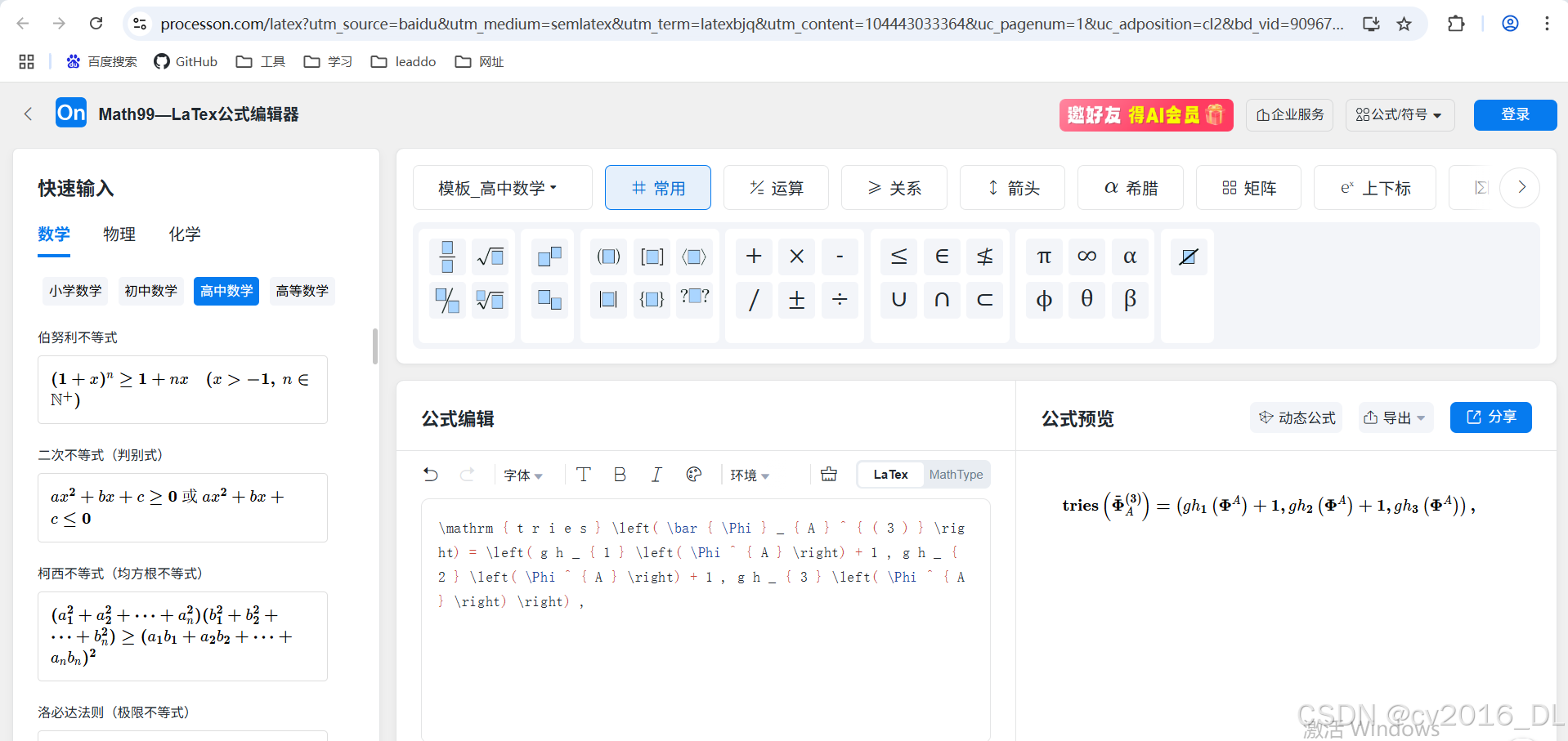
可以看出识别结果是对的。
测试原始模型输出的脚本:
from transformers import Qwen2_5_VLForConditionalGeneration, AutoProcessor
from qwen_vl_utils import process_vision_info
prompt = "你是一个LaText OCR助手,目标是读取用户输入的照片,转换成LaTex公式。"
local_model_path = "./Qwen2.5-VL-3B-Instruct" # 原始模型路径
test_image_path = "./LaTeX_OCR/997.jpg" # 测试图片路径
# 直接加载原始模型(不加载 LoRA)
model = Qwen2_5_VLForConditionalGeneration.from_pretrained(
local_model_path,
torch_dtype="auto",
device_map="auto"
)
processor = AutoProcessor.from_pretrained(local_model_path)
# 构造输入消息(与微调时格式一致)
messages = [
{
"role": "user",
"content": [
{
"type": "image",
"image": test_image_path,
"resized_height": 100,
"resized_width": 500,
},
{"type": "text", "text": f"{prompt}"},
],
}
]
# 预处理输入
text = processor.apply_chat_template(
messages, tokenize=False, add_generation_prompt=True
)
image_inputs, video_inputs = process_vision_info(messages)
inputs = processor(
text=[text],
images=image_inputs,
videos=video_inputs,
padding=True,
return_tensors="pt",
).to("cuda") # 移动到 GPU(如果可用)
# 生成输出
generated_ids = model.generate(**inputs, max_new_tokens=8192)
generated_ids_trimmed = [
out_ids[len(in_ids):] for in_ids, out_ids in zip(inputs.input_ids, generated_ids)
]
output_text = processor.batch_decode(
generated_ids_trimmed,
skip_special_tokens=True,
clean_up_tokenization_spaces=False
)
print(output_text[0]) # 打印模型输出
6.全量微调
全量微调需要移除 LoRA 相关代码:
删除 peft 相关的导入和配置(LoraConfig, get_peft_model, PeftModel),
全参数微调需要更大的显存,因此可能需要降低 batch_size 或启用梯度检查点(gradient_checkpointing=True)。
学习率通常比 LoRA 更小(例如 5e-5 而不是 1e-4)。
train_full.py
import torch
from datasets import Dataset
from modelscope import snapshot_download, AutoTokenizer
from swanlab.integration.transformers import SwanLabCallback
from qwen_vl_utils import process_vision_info
from transformers import (
TrainingArguments,
Trainer,
DataCollatorForSeq2Seq,
Qwen2_5_VLForConditionalGeneration,
AutoProcessor,
)
import swanlab
import json
import os
# 配置参数
prompt = "你是一个LaText OCR助手,目标是读取用户输入的照片,转换成LaTex公式。"
model_id = "./Qwen2.5-VL-3B-Instruct"
local_model_path = "./Qwen2.5-VL-3B-Instruct"
train_dataset_json_path = "latex_ocr_train.json"
val_dataset_json_path = "latex_ocr_val.json"
output_dir = "./output/Qwen2-VL-3B-Full-Finetune" # 修改输出目录
MAX_LENGTH = 8192
# 数据预处理函数(与原脚本一致)
def process_func(example):
conversation = example["conversations"]
image_file_path = conversation[0]["value"]
output_content = conversation[1]["value"]
messages = [
{
"role": "user",
"content": [
{"type": "image", "image": image_file_path, "resized_height": 500, "resized_width": 100},
{"type": "text", "text": prompt},
],
}
]
text = processor.apply_chat_template(messages, tokenize=False, add_generation_prompt=True)
image_inputs, video_inputs = process_vision_info(messages)
inputs = processor(
text=[text],
images=image_inputs,
videos=video_inputs,
padding=True,
return_tensors="pt",
)
inputs = {key: value.tolist() for key, value in inputs.items()}
instruction = inputs
response = tokenizer(f"{output_content}", add_special_tokens=False)
input_ids = instruction["input_ids"][0] + response["input_ids"] + [tokenizer.pad_token_id]
attention_mask = instruction["attention_mask"][0] + response["attention_mask"] + [1]
labels = [-100] * len(instruction["input_ids"][0]) + response["input_ids"] + [tokenizer.pad_token_id]
if len(input_ids) > MAX_LENGTH:
input_ids = input_ids[:MAX_LENGTH]
attention_mask = attention_mask[:MAX_LENGTH]
labels = labels[:MAX_LENGTH]
return {
"input_ids": torch.tensor(input_ids),
"attention_mask": torch.tensor(attention_mask),
"labels": torch.tensor(labels),
"pixel_values": torch.tensor(inputs['pixel_values']),
"image_grid_thw": torch.tensor(inputs['image_grid_thw']).squeeze(0),
}
# 预测函数(与原脚本一致)
def predict(messages, model):
text = processor.apply_chat_template(messages, tokenize=False, add_generation_prompt=True)
image_inputs, video_inputs = process_vision_info(messages)
inputs = processor(
text=[text],
images=image_inputs,
videos=video_inputs,
padding=True,
return_tensors="pt",
).to("cuda")
generated_ids = model.generate(**inputs, max_new_tokens=MAX_LENGTH)
generated_ids_trimmed = [out_ids[len(in_ids):] for in_ids, out_ids in zip(inputs.input_ids, generated_ids)]
return processor.batch_decode(generated_ids_trimmed, skip_special_tokens=True, clean_up_tokenization_spaces=False)[0]
# 加载原始模型和处理器
tokenizer = AutoTokenizer.from_pretrained(local_model_path, use_fast=False, trust_remote_code=True)
processor = AutoProcessor.from_pretrained(local_model_path)
model = Qwen2_5_VLForConditionalGeneration.from_pretrained(
local_model_path,
device_map="auto",
torch_dtype=torch.bfloat16,
trust_remote_code=True,
)
model.enable_input_require_grads() # 启用梯度检查点时必需
# 加载数据集
train_ds = Dataset.from_json(train_dataset_json_path)
train_dataset = train_ds.map(process_func)
# 全参数微调的训练配置
args = TrainingArguments(
output_dir=output_dir,
per_device_train_batch_size=2, # 降低 batch_size 以适应显存
gradient_accumulation_steps=8, # 增加梯度累积步数
logging_steps=10,
num_train_epochs=2,
save_steps=100,
learning_rate=5e-5, # 更小的学习率
save_on_each_node=True,
gradient_checkpointing=True, # 启用梯度检查点
report_to="none",
)
# SwanLab 回调(移除 LoRA 相关配置)
swanlab_callback = SwanLabCallback(
project="Qwen2-VL-Full-Finetune",
experiment_name="3B-LaTeX-OCR",
config={
"model": "https://modelscope.cn/models/Qwen/Qwen2.5-VL-3B-Instruct",
"dataset": "https://modelscope.cn/datasets/AI-ModelScope/LaTeX_OCR/summary",
"model_id": model_id,
"train_dataset_json_path": train_dataset_json_path,
"val_dataset_json_path": val_dataset_json_path,
"output_dir": output_dir,
"prompt": prompt,
"train_data_number": len(train_ds),
"token_max_length": MAX_LENGTH,
},
)
# 初始化 Trainer(直接使用原始模型)
trainer = Trainer(
model=model, # 直接使用原始模型,而非 LoRA 模型
args=args,
train_dataset=train_dataset,
data_collator=DataCollatorForSeq2Seq(tokenizer=tokenizer, padding=True),
callbacks=[swanlab_callback],
)
# 开始训练
trainer.train()
# ====================测试阶段===================
# 加载验证数据集
with open(val_dataset_json_path, "r") as f:
test_dataset = json.load(f)
test_image_list = []
for item in test_dataset:
image_file_path = item["conversations"][0]["value"]
label = item["conversations"][1]["value"]
messages = [{
"role": "user",
"content": [
{"type": "image", "image": image_file_path, "resized_height": 100, "resized_width": 500},
{"type": "text", "text": prompt},
]
}]
response = predict(messages, model) # 直接使用原始模型预测
print(f"Predict: {response}\nGround Truth: {label}\n")
test_image_list.append(swanlab.Image(image_file_path, caption=response))
# 记录结果到 SwanLab
swanlab.log({"Prediction": test_image_list})
swanlab.finish()
全量微调显存占用情况:

测试全量微调后模型效果:
注意:需要将原始模型中的preprocessor_config.json 和chat_template.json拷贝到微调后模型的目录中。
测试全量微调脚本:
infer_full.py
from transformers import Qwen2_5_VLForConditionalGeneration, AutoProcessor
from qwen_vl_utils import process_vision_info
# 注意:这里加载的是微调后的模型路径!
finetuned_model_path = "./output/Qwen2-VL-3B-Full-Finetune/checkpoint-124" # 替换为你的微调输出目录
test_image_path = "./LaTeX_OCR/997.jpg"
prompt = "你是一个LaText OCR助手,目标是读取用户输入的照片,转换成LaTex公式。"
# 加载微调后的模型和处理器
model = Qwen2_5_VLForConditionalGeneration.from_pretrained(
finetuned_model_path,
torch_dtype="auto",
device_map="auto"
)
processor = AutoProcessor.from_pretrained(finetuned_model_path)
# 构造输入(与训练时格式一致)
messages = [
{
"role": "user",
"content": [
{"type": "image", "image": test_image_path, "resized_height": 100, "resized_width": 500},
{"type": "text", "text": prompt},
],
}
]
# 预处理和生成
text = processor.apply_chat_template(messages, tokenize=False, add_generation_prompt=True)
image_inputs, _ = process_vision_info(messages)
inputs = processor(
text=[text],
images=image_inputs,
padding=True,
return_tensors="pt",
).to("cuda") # 确保数据在GPU上
# 生成输出
generated_ids = model.generate(**inputs, max_new_tokens=8192)
generated_ids_trimmed = [out_ids[len(in_ids):] for in_ids, out_ids in zip(inputs.input_ids, generated_ids)]
output_text = processor.batch_decode(
generated_ids_trimmed,
skip_special_tokens=True,
clean_up_tokenization_spaces=False
)
print("微调后模型输出:", output_text[0])
结果输出:

7.参考文档
更多推荐
 已为社区贡献14条内容
已为社区贡献14条内容


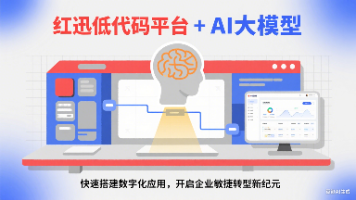





所有评论(0)